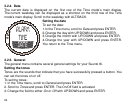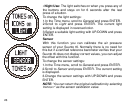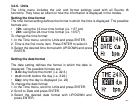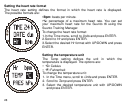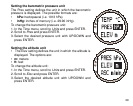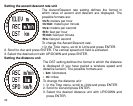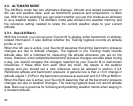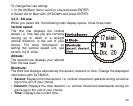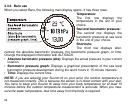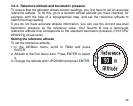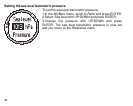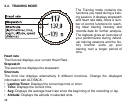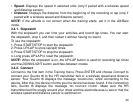32
3.3. ALTI/BARO MODE
The Alti/Baro mode has two alternative displays: Altitude and related parameters in
Alti use and weather data, such as barometric pressure and temperature, in Baro
use. With the Use selection you can select whether you use this mode as an altimeter
or as a weather station. The Alti/Baro mode also contains the weather memory and
the reference setting needed to relate the current weather state to your current
altitude.
3.3.1. Use (Alti/Baro)
With this function you can set your Suunto t6 to display either barometric or altitude-
related information. It also defines whether the Training logbook records an altitude
profile or not.
When the Alti use is active, your Suunto t6 assumes that all the barometric pressure
changes are due to altitude changes. The logbook in the Training mode records
altitude data. Alti is intended for measuring the altitude whenever you are on the
move. However, since substantial barometric pressure changes can take place during
a day, you should compare the changes reported by your Suunto t6 to well-known
references. If these differ from each other too much, the reason is the weather
change and you should set a new reference value as advised in section 3.3.4.
Reference altitude and barometric pressure. A general rule is that a 10 m change in
altitude equals 1,2 hPa in the barometric pressure at sea level and 0,5 hPa at 8000 m.
When the Baro use is active, your Suunto t6 assumes that all the barometric pressure
changes are due to weather changes. The training logbook does not record altitude
data. Baro use is practical for following and predicting weather trends when staying in
a constant altitude.



